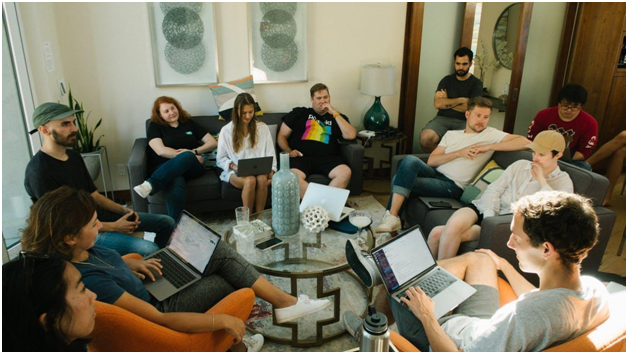Design your Office based on these 5 Trends

Gone are the days when working at an office translated to a cramped-up lifestyle – at least for the time you work. You used to go home, all groggy and tired from bending over your desk all day, but thanks to dynamic workspaces, your office is becoming your go-to place even on the weekends! From pop-up privacy booths to all-expenses-paid snack bars, there is no more left for a one-size-fits-all workspace.
Let’s shed some light on the following 5 trends to learn how you can design your office as per your staff’s requirements.
1) Dynamic and Multi-Functional Workspaces
Your office is perhaps the only environment where you can experiment with innovation to see how your employees react and adapt. Multi-functional, dynamic workspaces are taking the lead in boosting the economy with their ergonomically lightweight, moveable, and easily accessible elements.
Instead of installing cubicles all around, revamp your office space by including a workspace with furniture-forward elements. Install eco-friendly dividers on wheels, comfortable workstations, and smart lounging spaces with TV sets, gadgets, and books.
2) Sustainable Flooring
Instead of plastering your office with typical and traditional drywall construction, choose flooring options that offer better sustainability and durability. Today, people want to work in workspaces that are pro-environment and minimize the risk of injuries as well.
Laminate Flooring provides easy DIY installation as well as sustainability with its unique touch of realism. Infused with HydroSeal and Scratch Guard innovative smart technology, laminate flooring is not only resistant to stains and scratches but also surface moisture as well! Quickstep.co.uk offers wood, vinyl, and laminate flooring options exclusively for office workspaces to ensure a decent work-proof and easy-to-clean work environment.
3) Mimicking Work-From-Home Environment
Since office-goers are transforming into digital nomads, working from home is taken as a lucrative perk instead of a mere suspension trial. Offices are trying to match their work environments to that of their employees’ homes so that they can encourage them to work in the premises. Offices are installing bars, fireplaces, game rooms, and comfortable furniture to entice the community with hospitality.
Working flexibly from home can, at times, limit progress that requires a collective input or expedited work delivery. Instead of confining the entire team to a seminar room for a discussion, introduce a human-centric, collaborative workspace with comfortable cushions or sofa sets for facilitating discussion. Your mind works better when you are relaxed – so implement a dynamic, multi-functional workspace to boost creativity and productivity!
4) Privacy Booths
Not many people are comfortable with working in open workspaces. For people who still want to have some privacy but do not want to limit themselves to a tiresome cubicle – enter pop-up privacy booths! A pop-up privacy booth has enough space to house a single person without making them feel the least bit claustrophobic. Install a handy phone along with a workstation in the booth to facilitate maximum privacy and concentration.
5) Smart Premises
Smart data-tracking furniture, sensory architecture, and movement-tracking products are allowing office campuses to introduce smart AI-integrated technologies to their work environment. Sensory rooms can track your presence in the room and customize lighting or temperature settings by recording and tracking your data. Similarly, you can monitor and control your interior working space with the help of custom apps that allow audiovisual sensory systems or entire floors to adapt to your behavior.
Today, many employees prefer committing to a long-term job after ensuring the working conditions of the office. To ensure maximum productivity, employees require peace and tranquility, but not for the sake of their comfort. Offices are moving ahead with open workspaces instead of confined cubicles to provide a disruption-and-distraction-free work environment.
-
Quotes1 year ago
30 Inspirational Thoughts For The Day
-
Self Improvement1 year ago
7 Tips To Recreate Your Life In 3 Months And Change Your Destiny
-
Motivation1 year ago
5 Excellent Ways To Stay Focused On Your Dreams
-
Quotes1 year ago
21 Quotes About Chasing Perfection And Striving For It
-
Health1 year ago
4 CBD Products Your Dog Deserves To Have
-
Personal Finance2 months ago
How Do I Find My UCAS ID Number?
-
Entrepreneurs1 year ago
1Password Evaluation – The Highest Ranked Password Manager Out There
-
Entrepreneurs1 year ago
51 Lucrative Ways to Make Money From Home



























